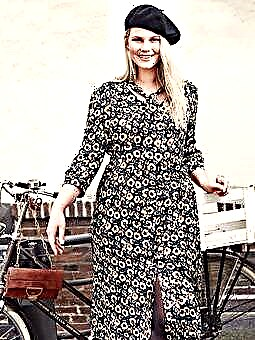Share
Pin
Tweet
Send
Share
Send
Almost any modern sewing machine is equipped with a loop-automatic function, which greatly facilitates the processing of welded loops. But sometimes you have to make a choice in favor of handmade.

This may be due to the density and thickness of the fabric, which your machine cannot cope with, or you just want to add some exclusivity to the sewing project, so you prefer hand-made welt loops.
The main difference between the loop made by hand and on the sewing machine, in the order of action.
Sewing machine loop
- mark the loop;
- execute it on a typewriter - the loop is built around the contour with dense zigzag stitches automatically;
- cut through the loop.
Life hack: how not to ruin welt loops
Handmade loop
- mark the loop;
- cut through the loop;
- open the open sections of the loop by hand with dense, even, symmetrical stitches.
Step 1

Mark the loops with a water-soluble marker. The length of the buttonhole must be greater than the diameter of the button.
Step 2
Cut the loop.Step 3

Start processing the buttonhole on one side - sew over the open cut with buttonhole stitches.
Buttonhole stitches: how to sew and where to use it
Step 4

At the end, sew a few short stitches and then a few long ones.This way, you bind and go to the other side of the loop. Also overcast the open cut with a buttonhole stitch.
Step 5

At the end, sew a few short and several long stitches to sew.

By the same principle, instead of a rectangular loop, oval-shaped loops can be made. Or eye loops.
Advice
- Handling the weld loop requires extreme precision and care.
- It is necessary to observe the density and length of stitches, do not tighten the thread too much.
- Sew with a single thread, since when using a double thread, it is difficult to avoid an error in operation.
- For processing loops manually use special threads.
- Before making loops on the product, be sure to practice on the patch of fabric from which the thing is sewn. This skill is reinforced only by practice!
- To strengthen the loop, you can lay along the sections, for example, embroidery thread. It will provide stability and give the loops, made by hand, a beautiful relief.
Photo: craftsy.com
Share
Pin
Tweet
Send
Share
Send



